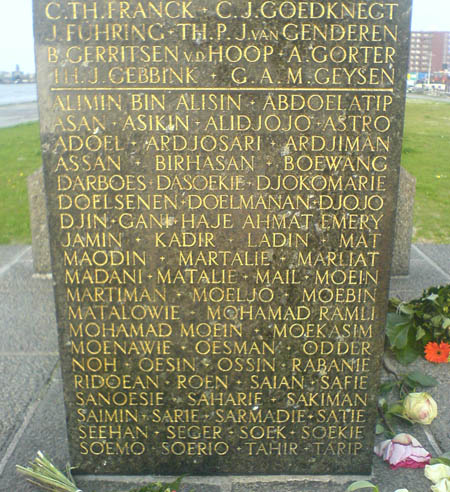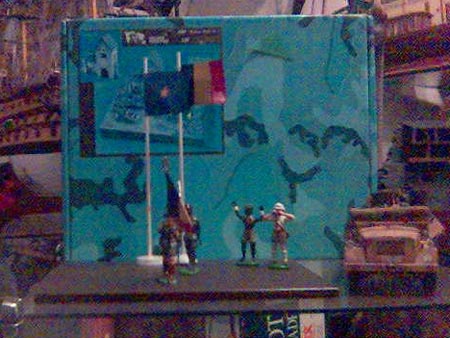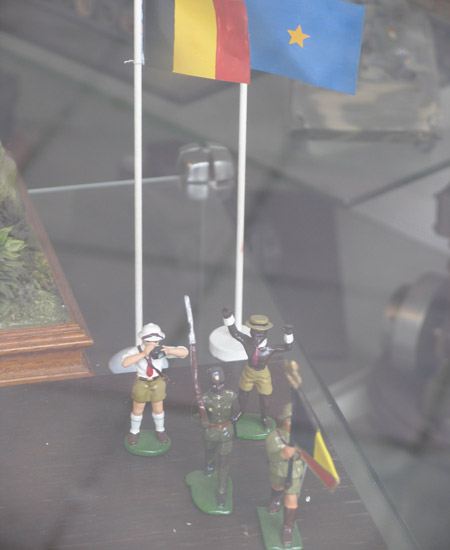Remembering liberation Dutch style
During Thursdays Anniek van Hardeveld memorial race i was doing a checkppoint (yes i know i am getting lazy and slow these days…) on the head of java island. The checkpoint was at the memorial for the employees of the N.V. Nederlandse Scheepvaartmaatschapij who had died ‘at sea or wherever on the shore’ while defending the ‘liberty of their country’.
The memorial is a rather simple one made from stone. It has a 3 meter-or-so high stone base on top of which there is a 3 meter high sculpture of a sailor gazing to the west (into the sunset? after his dead comrades? at Amsterdam central station?). The base of the monument is covered by plates of shiny black marble (or something like that). Inscribed in gold on these plates are the names of the employees who died between 1940 and 1945.
Now while waiting for the first racers to arrive i started to read the names and was stuck by the fact that every second of them sounded non-dutch to me (which of course is not strange at al as we are talking about sailors here who have always been a motley crue). Took me a while to figure out that i was in fact looking at the section of the monument that lists non-dutch people. that’s right, when they set up this monument these freedom-lovin’, injustice-hatin’ Dutch people decided not to mix then names of the Dutch people and foreigners who had sailed, fought and died together. Instead they decided to list them in separate sections of the monument, The dutch with first and last names and the others only with what seems to be their last names/nick names:

Now the monument was set up in 1950, and lots of people have argued that it was ok for the Dutch to be a little bit racist back then (like it was ok that the first thing the Dutch did after being liberated was sending troops to indonesia to make sure they could go on repressing the locals some more). Guess the times were indeed a bit different then, but the fact that nobody bothers to change this fuck-up while once a year an official delegation comes along to lay down flowers also tells a fair bit about our times. So this post is dedicated to the memory of:
alimin bin alisin, abdoelatip, asan, asikin, alidjojo, astro, adoel, ardjosari, ardjiman, assan, birhasan, boewang, darboes, dasoekie, djokomarie, doelsenen, doelmanan, djojo, djin, gani, haje, ahmat emery, jamin, kadir, ladin, mat, maodin, martalie, marliat, madani, matalie, mail, moein, martiman, moeljo, moebin, matalowie, mohamad ramli, maohamad moein, moekasim, moenawie, oesman, odder, noh, oesin, ossin, rabanie, ridoean, roen, saian, safie, sanoesie, saharie, sakiman, saimin, sarie, sarmadie, satie, seehan, seger, soek, soekie, soemo, soerio, tahir & tarip
(To me this also looks a bit like they ran out of space and decided not to honour people with names in the u to z range…)


